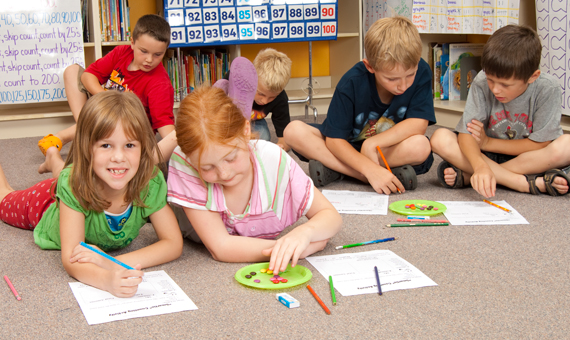Philosophy behind Booster program
In part, the Renfrew County DSB has aligned its Booster program to the conclusions of the 2003 Early Reading Strategy: The report of the expert panel on early reading in Ontario.
“There is a critical window of opportunity from the ages of four to seven for learning to read. Children who successfully learn to read in the early Primary years of school are well-prepared to read for learning and for pleasure in the years to come,” the report stated.
Booster principal Brent McIntyre explains that they also embraced Richard Elmore’s three-pronged approach to affecting student achievement. Elmore is Director of the Consortium for Policy Research in Education at Harvard’s Graduate School of Education. He is currently exploring how schools of different types and in different policy contexts develop a sense of accountability and a capacity to deliver high-quality instruction.
Increase skill and capacity of teachers
Booster teachers gather for in-service training at the end of June. The three teacher liaisons select activities and learning material that are data-informed and reflect precise, targeted instruction. The teacher liaisons work on site at the eight schools to support teachers, provide additional resource support and encourage a strong sense of collegiality among teachers and assistants at each site.
“This program is a high-stakes and intense four weeks, designed to yield tangible improvements for each student,” explains Steve Sliwa, OCT, formerly a superintendent of schools responsible for Booster and Early Learning Programs for the Renfrew County DSB, now a superintendent of instruction with the Ottawa-Carleton DSB.
Change contents or teaching approaches that have not yielded the results and outcomes teachers want
Booster employs a five-to-one student-to-teacher ratio, and each of the eight sites also has trained student assistants. There are many more one-on-one activities compared to the regular school-year classroom. As well there is intense data gathering on individual students and explicit teaching of the skills and knowledge the data reveal are missing in each child.
Change the relationship of teacher and student in the presence of content
Booster uses play and fun-based activities designed to engage students and make learning more enjoyable.

Students are grouped not only according to their reading level, but also their individual strengths.